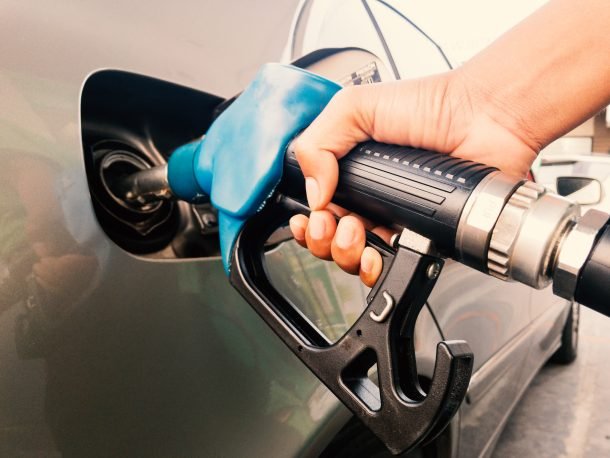Fuel Prices Are Allegedly Cooling Off

With the last several months delivering record-breaking fuel prices, as society endures what has undoubtedly been the largest spike in energy cost and inflation since the 1970s, everyone has been hoping to catch a break this summer. Some have even gotten theirs. While things are still looking exceptionally bleak in the long term, the United States appears to be enjoying a modest reprieve.
The Biden administration has mobilized Amos Hochstein, the special presidential envoy and coordinator for international energy affairs, to tell the corporate press that the government is now forecasting per-gallon pricing below $4.00. Considering how unpopular rising energy costs have made the White House, having an expert out there suggesting things are about to improve seems a rather standard play to make. But there’s real reason to believe him. The U.S. Energy Information Administration (EIA) has shown gasoline prices trending downward since late June and has been echoed by GasBuddy — which claimed national fuel prices have declined for five consecutive weeks.
“We’ve seen the national average price of gasoline decline for a fifth straight week, with the pace of recent declines accelerating to some of the most significant we’ve seen in years. This trend is likely to reach a sixth straight week, with prices likely to fall again this week. Barring major hurricanes, outages or unexpected disruptions, I forecast the national average to fall to $3.99/gal by mid-August,” said Patrick De Haan, head of petroleum analysis at GasBuddy. “So far, we’ve seen the national average drop for 34 straight days, with over 25,000 stations now back at $3.99 per gallon or less, and thousands more stations will join this week. In addition, we will see several states fall back under an average of $4.00, the majority being in the south, but that could spread to more states in the weeks ahead.”
That regional data is important because you might not even have noticed a decrease in your area. Anyone venturing more than 50 miles from home knows that pricing can vary immensely. This is due to a myriad of reasons including regional competition, local taxes, unique fuel blends, general demand, and how much work it takes to resupply that particular station. Having just spent some time in the boonies, I noticed a stark increase in prices at isolated truck stops vs the Flying J along the main highway. But the best I can say about my local station is that the price seems to have stabilized at the record-breaking highs we witnessed a few weeks earlier.
So are fuel prices really going down or are we just enjoying a respite from further increases? Well, according to AAA, the national average for fuel peaked on June 14th at $5.02 per gallon and has settled back down to a less-harrowing $4.52. Though that’s still a dollar more than the $3.16 per-gallon average enjoyed in July 2021 and over twice the $2.17 average witnessed in the summer of 2020.
“It’s not $5.00 anymore,” Hochstein told CBS on Monday. “It’s now $4.55. And I expect it to come down more towards $4.00. And we already have many gas stations around the country that are below $4.00. So we’re — we’re — this is the fastest decline rate that we’ve seen against a major increase of oil prices during a war in Europe where one of the parties in the war is the third largest producer in the world. So, these are extraordinary circumstances. We’ve taken very tough measures to address them right away. Both for the American consumer but really for the global economy too.”
He suggested Joe Biden’s trip to the Middle East set the stage for future oil negotiations, noting that the price per barrel had dropped and that Organization of the Petroleum Exporting Countries (OPEC) was plotting policy changes ahead of its big August meeting. While this is still assumed to result in an uptick in production, the timeline doesn’t necessarily mesh with Biden’s trip. Hochstein also praised the Biden administration’s decision to tap into the Strategic Petroleum Reserve (by 1 million barrels of oil per day) to aid the market.
The reserve was originally envisioned to keep the United States sanguine in times of extreme distress. While this certainly seems like a semi-plausible use case, Biden has still taken criticism for tapping in. Complaints usually include claims that this has done little more than aid highly profitable energy companies and some intense fury over reports of the president’s decision to sell 950,000 barrels to a state-owned Chinese firm in which Hunter Biden’s private equity firm held a $1.7 billion stake. An additional 4 million barrels are said to have been shipped to other nations, further enraging an opposition that already blames existing government policy for exacerbating the energy crisis.
While things are always a little more complicated than we’d like, gripes that the Biden administration’s policies aren’t helping the average consumer feel pretty valid. Comparisons have likewise been made to rising energy costs witnessed during the beginning of the Obama administration. Team Biden has unquestionably used Obama-era energy regulation as a blueprint for policy and has similarly filled its ranks with officials from the prior administration’s Rolodex.
Hochstein has served on numerous Congressional committees and was previously a lobbyist for domestic and international oil companies. However, he’s probably best known today for being an energy diplomat for the Obama administration and working in Ukraine.
My take is that plenty of developed nations have unsound energy policies ( e.g. Germany) and that deciding where those ideas came from is slightly less important than fixing them. As things currently stand, the only group that’s actually suffering from these unprecedented fuel prices are regular people. Oil companies are enjoying record profits and the crisis has allowed government officials to make the kind of decisions that will ensure they’ll have cushy jobs waiting for them at the largest corporate entities on the planet.
As for fuel prices, a barrel of oil has gotten roughly $20 cheaper within the last month. That’s a good sign that things might be turning around. But we usually see the summer surge break eventually and that day may have come sooner than expected as plenty of people decided it was better to save money by driving less. Having lost their buying power over the last few years, far fewer Americans can afford to take vacations anymore. Lofty fuel bills may have simply exacerbated the trend, driving down demand. Though there’s nothing to suggest this will remain the case on a longer timeline. For most of the world, energy regulations are still poised to become even more stringent in the years ahead and that’s almost assured to result in prices climbing again.
[Image: Nithid Memanee/Shutterstock]

A staunch consumer advocate tracking industry trends and regulation. Before joining TTAC, Matt spent a decade working for marketing and research firms based in NYC. Clients included several of the world’s largest automakers, global tire brands, and aftermarket part suppliers. Dissatisfied with the corporate world and resentful of having to wear suits everyday, he pivoted to writing about cars. Since then, that man has become an ardent supporter of the right-to-repair movement, been interviewed on the auto industry by national radio broadcasts, driven more rental cars than anyone ever should, participated in amateur rallying events, and received the requisite minimum training as sanctioned by the SCCA. Handy with a wrench, Matt grew up surrounded by Detroit auto workers and managed to get a pizza delivery job before he was legally eligible. He later found himself driving box trucks through Manhattan, guaranteeing future sympathy for actual truckers. He continues to conduct research pertaining to the automotive sector as an independent contractor and has since moved back to his native Michigan, closer to where the cars are born. A contrarian, Matt claims to prefer understeer — stating that front and all-wheel drive vehicles cater best to his driving style.
More by Matt Posky
Latest Car Reviews
Read moreLatest Product Reviews
Read moreRecent Comments
- Brian Uchida Laguna Seca, corkscrew, (drying track off in rental car prior to Superbike test session), at speed - turn 9 big Willow Springs racing a motorcycle,- at greater speed (but riding shotgun) - The Carrousel at Sears Point in a 1981 PA9 Osella 2 litre FIA racer with Eddie Lawson at the wheel! (apologies for not being brief!)
- Mister It wasn't helped any by the horrible fuel economy for what it was... something like 22mpg city, iirc.
- Lorenzo I shop for all-season tires that have good wet and dry pavement grip and use them year-round. Nothing works on black ice, and I stopped driving in snow long ago - I'll wait until the streets and highways are plowed, when all-seasons are good enough. After all, I don't live in Canada or deep in the snow zone.
- FormerFF I’m in Atlanta. The summers go on in April and come off in October. I have a Cayman that stays on summer tires year round and gets driven on winter days when the temperature gets above 45 F and it’s dry, which is usually at least once a week.
- Kwik_Shift_Pro4X I've never driven anything that would justify having summer tires.


































Comments
Join the conversation
West coast: Gas prices dropped from about $7 to $6.20 for premium. 2019 prices were in the mid $4's.
Interesting that the installed Xiden administration is now taking credit for the price drop after telling us over and over they couldn’t do anything about the price of gas.
What disgusting, sub-human cowards